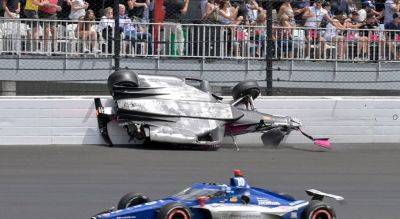Indy legends remember era of qualifying engines increasing speed, danger at Indy 500
INDIANAPOLIS – What is perhaps the most impressive thing about the speeds that were run on “Fast Friday” for the 107th Indy 500 is they are the same engines that were used in last week’s GMR Grand Prix.
For some teams, the engine might have been installed and used in the April 30 race at Barber Motorsports Park and maybe even the Acura Grand Prix of Long Beach two weeks earlier.
True, the boost was turned up for Fast Friday and will continue at those turbocharger pressure settings for qualification weekend. That is the biggest reason why the speeds jumped from the 229 mph range to the high 234s that were run on Friday.
HOW TO WATCH INDY 500 QUALIFYING: Full weekend schedule, details
INDY 500 INFO: Start times, schedules, TV, stats, historical details about the race
But as recently as 2005, teams at Indianapolis Motor Speedway used to install special, high-powered, highly tuned Indy 500 qualifying engines. They were designed specifically for maximum speed over the four-lap, 10-mile qualification attempts to determine the 33-car starting lineup for the Indianapolis 500.
The 2005 season was the end of a competing engine manufacturer battle between Honda and Chevrolet until that battle was renewed with the 2012 season.
From 2006-11, Honda was the sole supplier and to meet the demand of providing engines for the entire field, Honda convinced IndyCar officials to do away with special qualifying engines.
More durable engines gave Honda Performance Development (HPD) a chance to meet the capacity requirements. Less rebuilds eased the supply chain issues.
When Chevrolet returned in 2012, both engine manufacturers agreed to mileage limitations where an engine could be used for several race weekends before being rebuilt.
Currently,






